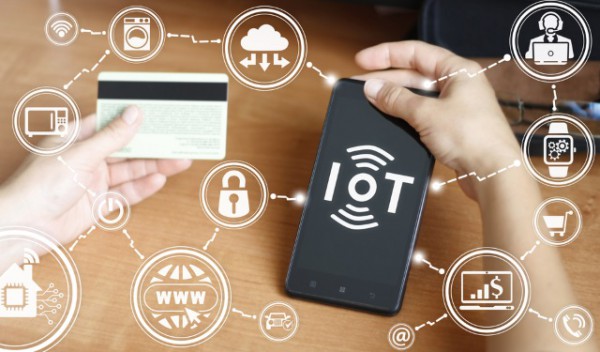6 IoT trends for 2022

The Internet of Things (IoT) has seen incredible growth in a relatively short period. Despite being fairly new, smart devices are everywhere in commercial and consumer circles, and they show no signs of stopping.
While the IoT’s growth may remain unchanged in 2022, it will shift and evolve. Here are six trends that will shape the IoT this year.
SEE ALSO: 5 trends driving solar tech adoption in 2022
1. IoMT Continues to Expand
The COVID-19 pandemic has spurred Internet of Medical Things (IoMT) adoption, with rising demand for hands-free health technologies. In 2021, 64 percent of U.S. households reported using these services, with 43 percent saying they want to keep them after the pandemic. Those signs point toward continued IoMT growth in 2022.
Devices like wearable health monitors will become more widespread to expand at-home care. Hospitals will use IoT connectivity to track resources and conduct remote appointments. Even as the pandemic subsides, these trends will grow to make healthcare more accessible.
2. Security Remains a Focus
The IoT’s security shortcomings become more concerning as its popularity grows. Breaching connected cars could cause roughly 3,000 fatalities during rush hour traffic. Security will be a focus as more IoT devices are developed and cybercrime rises.
IoT manufacturers will include more built-in security measures like confidential computing and verification methods for over-the-air updates. Security vendors will offer more IoT-specific services to complement that upgrade. Vulnerabilities won’t disappear entirely, but they will shrink.
3. 5G Drives IIoT Growth
The industrial IoT (IIoT) is one of the most promising use cases for these technologies. At the same time, current networks with limited bandwidth and high latency restrict its implementation. The growth of 5G in 2022 will change that.
There are already 48 billion internet-connected devices, pushing current networks to their limits. 5G’s faster speeds, lower latency and higher bandwidth will let industrial facilities expand the IIoT to more areas. Entire factories could become cohesive, interoperable units.
4. IoT Delivers Supply Chain Resiliency
Supply chain disruptions plagued businesses in 2020 and 2021. In response, more companies will apply IoT connectivity to their logistics operations. Remote tracking will provide the transparency companies need to see disruptions before they occur and respond accordingly.
Similarly, the data from these devices can feed into intelligent algorithms to provide actionable insights. These upgrades will make supply chains far more resilient, and they’re not possible without broader IoT implementation. Supply chain IoT could skyrocket as a result.
5. Edge Computing Grows
As IoT networks grow, they’ll pave the way for another inevitable innovation: edge computing. Edge computing could make self-driving cars more viable and mitigate many of today’s bandwidth, security and cloud reliability challenges. Despite these benefits, it remains a fringe technology today, but that will change with more IoT growth.
IoT advancements in security and processing power will make edge computing more reliable and easily scalable. As smart city infrastructure becomes more common, this technology could also start to disrupt consumer applications.
6. Wearables Reach New Heights
Wearables are one of the most popular consumer IoT segments, and that trend will expand in 2022. While wearables today consist mostly of smartwatches and wristbands, they’ll become far more diverse. Smart rings, smart glasses, connected fabric and IoT ID tags have started to emerge and will take off this year.
Connected wearables have more than doubled between 2016 and 2019, a trend that more diverse offerings will push further. In 2022, wearables will help improve accessibility for people with disabilities, expand augmented reality (AR) apps, help businesses reduce workplace injuries and more.
The IoT Is Evolving in 2022
After the past few years, businesses and consumers have discovered that the IoT can mitigate many widespread issues. As a result, the market will transform in 2022, becoming bigger and more versatile.
The world has only scratched the surface of the IoT’s potential. 2022 will reveal more of it, but it will continue to grow beyond that.
Image credit: Panchenko Vladimir / Shutterstock

Devin Partida writes about AI, apps and technology at ReHack.com, where she is Editor-in-Chief
